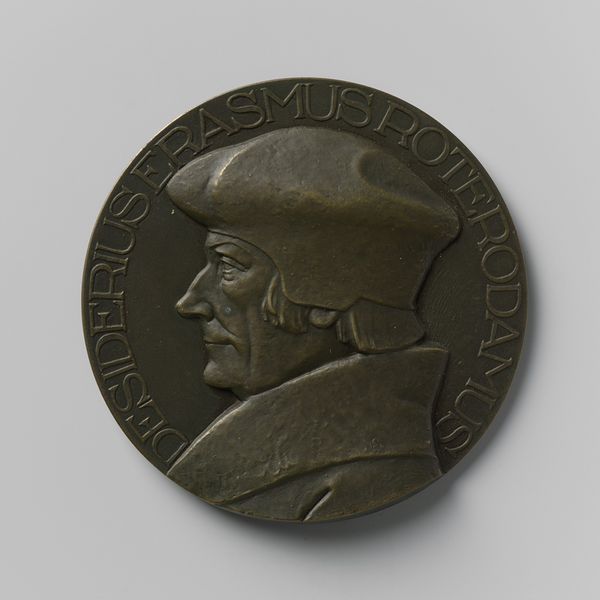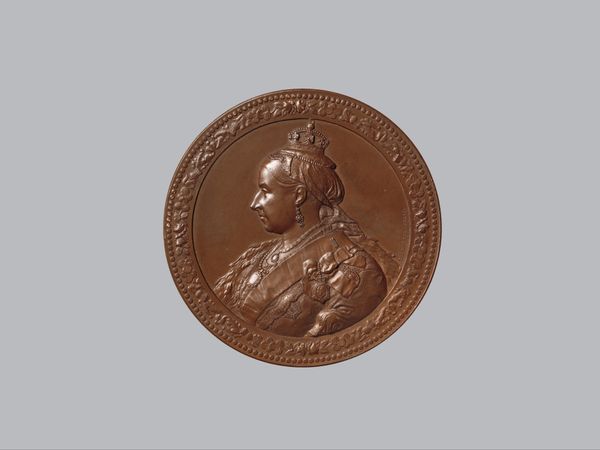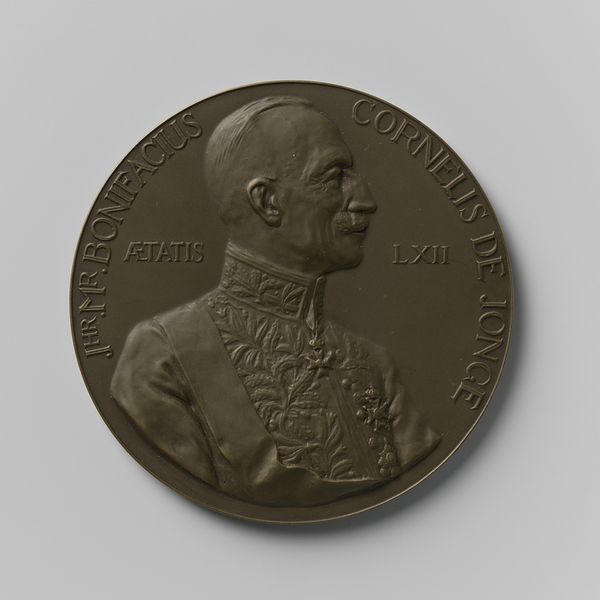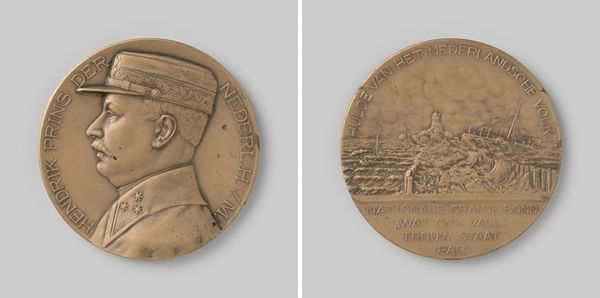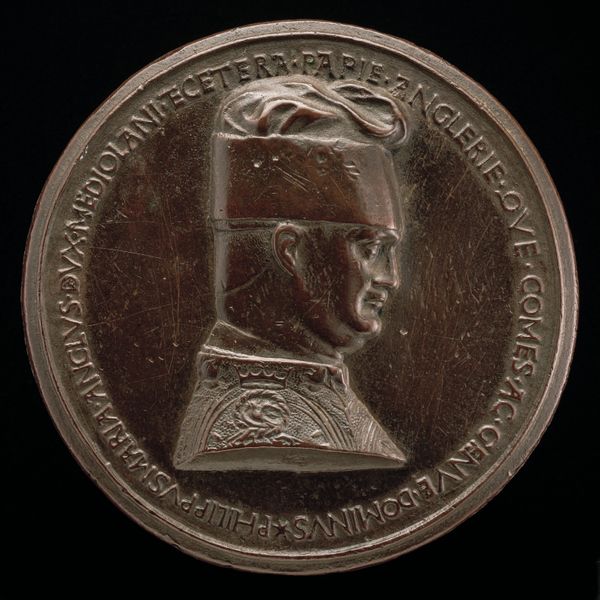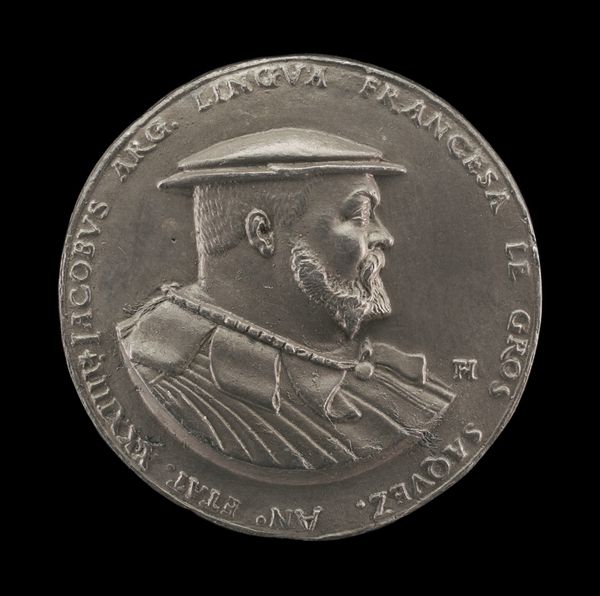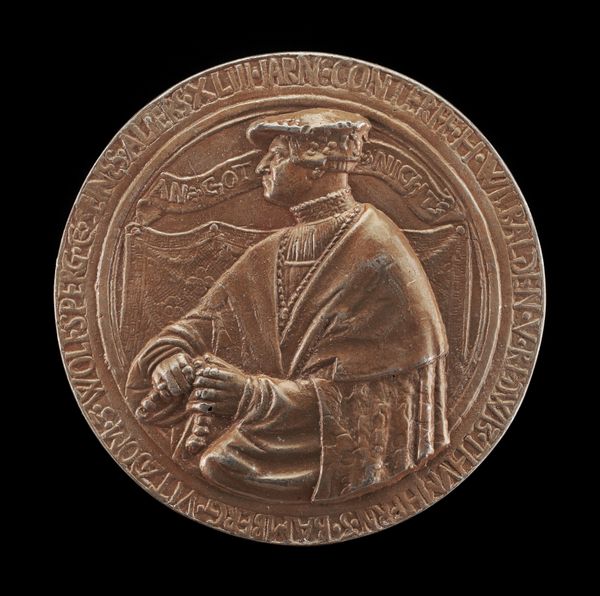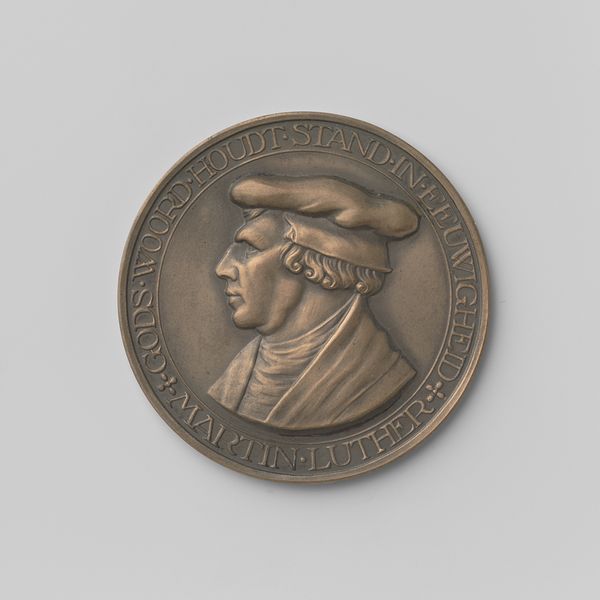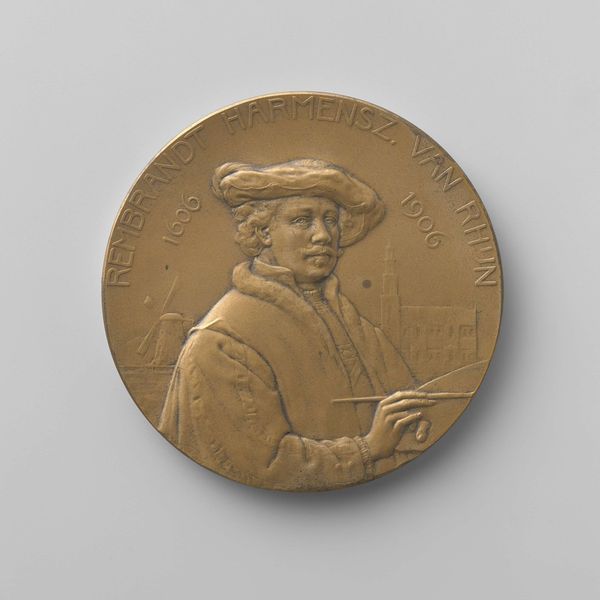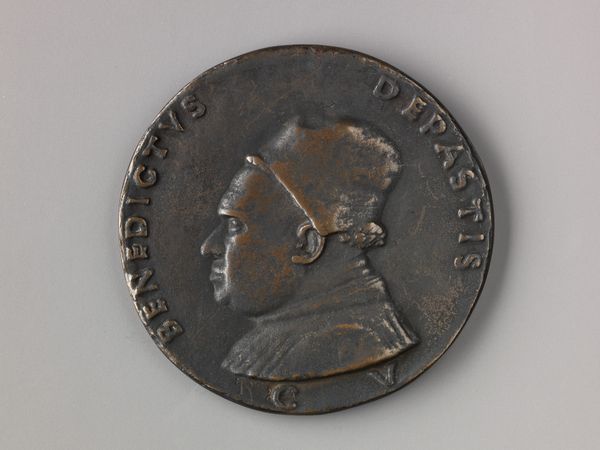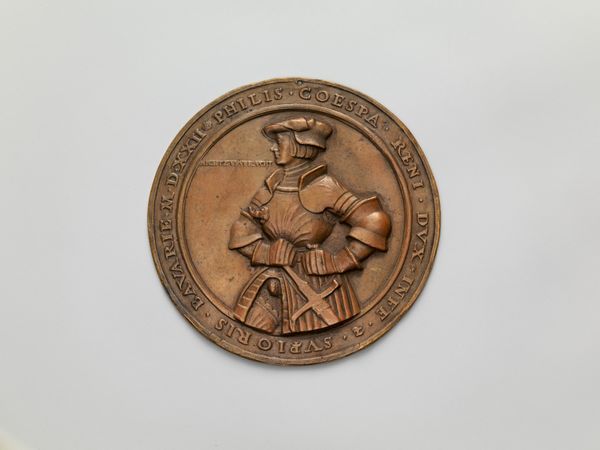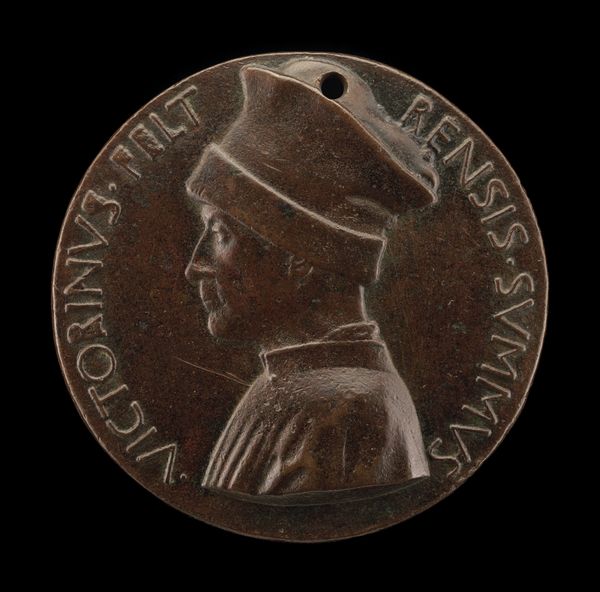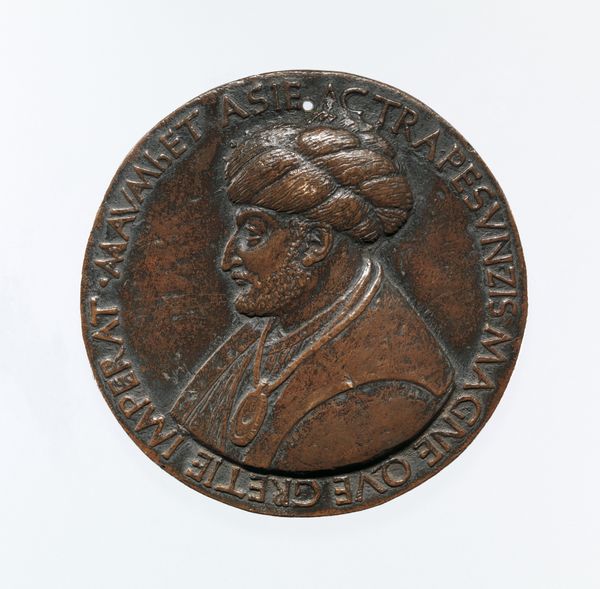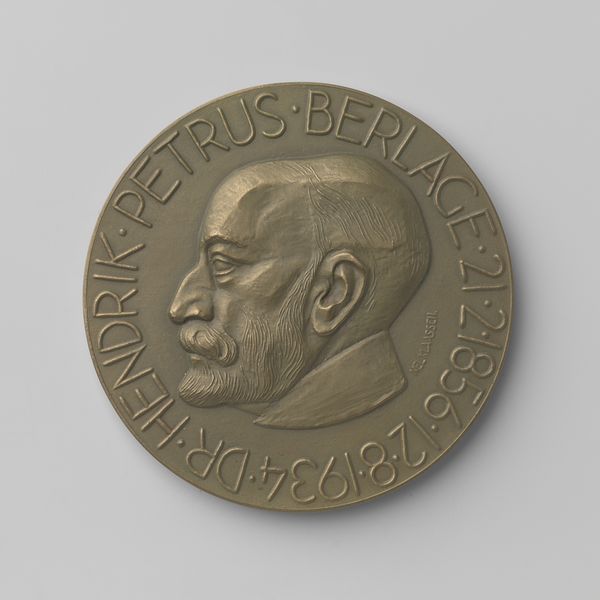
bronze, sculpture
#
portrait
#
bronze
#
sculpture
#
history-painting
#
modernism
Dimensions: diameter 6.0 cm, weight 80.79 gr
Copyright: Rijks Museum: Open Domain
Curator: Immediately, this circular form and metallic sheen gives me the impression of historical weight and formality. It reminds me of ancient coins or military medals, meant to preserve and commemorate significant events. Editor: Exactly. What we have here is a bronze medal, crafted in 1950 to mark "Reis van Prins Bernhard naar West-Indië", or Prince Bernhard’s trip to the West Indies. It was designed by Pol Dom. Curator: Interesting... a symbolic act of connection. Prince Bernhard is presented with a vessel and plane. It’s intended to underscore not only royal presence but an enduring cultural relationship that would carry some implications after the war. Editor: Yes, there’s a clear duality in its composition. The prince with his binoculars represents observation and a forward-looking vision, contrasted with a naval vessel in the background as a symbol of historical power and travel and then of course, the presence of an airplane as technological progress. The circular frame also encloses a very linear text around the edges, like an ouroboros, a kind of self-encapsulation of the narrative. Curator: You're right; the inscription locks the image and what it evokes firmly into the historical narrative. I can’t help but read this visual encoding in relation to colonial legacies, the power dynamics inherent in these ‘journeys’ and visits. Editor: That tension between observation, progress, and history is definitely at the heart of it. The very choice of bronze lends a sense of permanence, like the ideas of state and monarchy should last indefinitely, like collective memories rendered material. But there is always a tension present isn’t there. What do we choose to remember and immortalize? What is not present on this artifact is maybe even more significant. Curator: Agreed, that omission prompts crucial reflection. The work underscores the psychological function inherent to art objects – these symbols transcend mere illustration, shaping cultural memory and imprinting ideologies for posterity. Editor: Ultimately, its value resides in its layers—form, historical event, and enduring symbolic potential, which really gives it the quality of palimpsest I think.
Comments
No comments
Be the first to comment and join the conversation on the ultimate creative platform.
